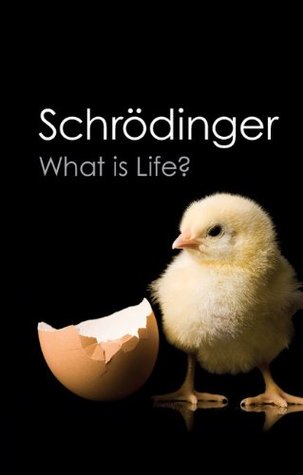More on this book
Community
Kindle Notes & Highlights
We feel clearly that we are only now beginning to acquire reliable material for welding together the sum total of all that is known into a whole; but, on the other hand, it has become next to impossible for a single mind fully to command more than a small specialized portion of it.
I can see no other escape from this dilemma (lest our true aim be lost for ever) than that some of us should venture to embark on a synthesis of facts and theories, albeit with second-hand and incomplete knowledge of some of them – and at the risk of making fools of ourselves. So much for my apology.
The difficulties of language are not negligible. One’s native speech is a closely fitting garment, and one never feels quite at ease when it is not immediately ...
This highlight has been truncated due to consecutive passage length restrictions.
(There is nothing over which a free man ponders less than death; his wisdom is, to meditate not on death but on life.)
This little book arose from a course of public lectures, delivered by a theoretical physicist to an audience of about four hundred which did not substantially dwindle, though warned at the outset that the subject-matter was a difficult one and that the lectures could not be termed popular, even though the physicist’s most dreaded weapon, mathematical deduction, would hardly be utilized.
The large and important and very much discussed question is: How can the events in space and time which take place within the spatial boundary of a living organism be accounted for by physics and chemistry? The preliminary answer which this little book will endeavour to expound and establish can be summarized as follows: The obvious inability of present-day physics and chemistry to account for such events is no reason at all for doubting that they can be accounted for by those sciences.
The arrangements of the atoms in the most vital parts of an organism and the interplay of these arrangements differ in a fundamental way from all those arrangements of atoms which physicists and chemists have hitherto made the object of their experimental and theoretical research.
To give the statement life and colour, let me anticipate what will be explained in much more detail later, namely, that the most essential part of a living cell – the chromosome fibre – may suitably be called an aperiodic crystal. In physics we have dealt hitherto only with periodic crystals. To a humble physicist’s mind, these are very interesting and complicated objects; they constitute one of the most fascinating and complex material structures by which inanimate nature puzzles his wits. Yet, compared with the aperiodic crystal, they are rather plain and dull. The difference in structure is
...more
Organic chemistry, indeed, in investigating more and more complicated molecules, has come very much nearer to that ‘aperiodic crystal’ which, in my opinion, is the material carrier of life. And therefore it is small wonder that the organic chemist has already made large and important contributions to the problem of life, whereas the physicist has made next to none.
The next step must be to compare his theoretical anticipations with the biological facts. It will then turn out that – though on the whole his ideas seem quite sensible – they need to be appreciably amended.
In this way we shall gradually approach the correct view – or, to put it more modestly, the one that I propose as the correct one.
Why are atoms so small? To begin with, they are very small indeed. Every little piece of matter handled in everyday life contains an enormous number of them. Many examples have been devised to bring this fact home to an audience, none of them more impressive than the one used by Lord Kelvin: Suppose that you could mark the molecules in a glass of water; then pour the contents of the glass into the ocean and stir the latter thoroughly so as to distribute the marked molecules uniformly throughout the seven seas; if then you took a glass of water anywhere out of the ocean, you would find in it
...more
The king would naturally indicate a length comparable with that of his own body, knowing that anything else would be very inconvenient. With all his predilection for the Ångström unit, the physicist prefers to be told that his new suit will require six and a half yards of tweed – rather than sixty-five thousand millions of Ångströms of tweed.
Nevertheless, the one and only thing of paramount interest to us in ourselves is, that we feel and think and perceive.


